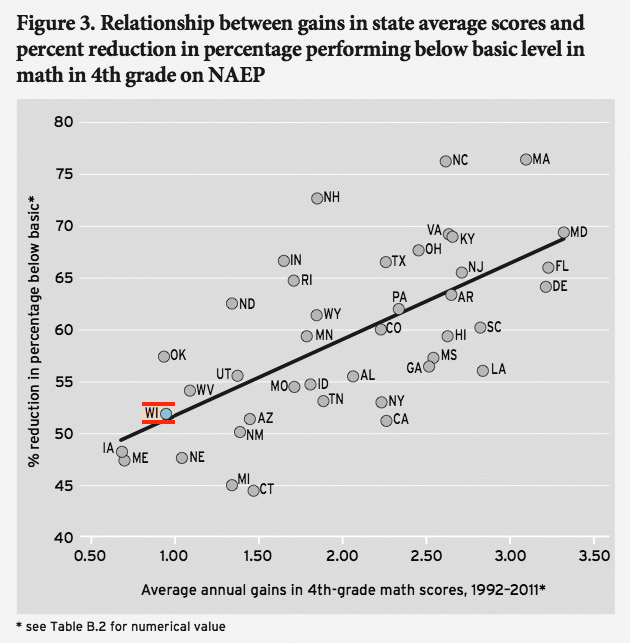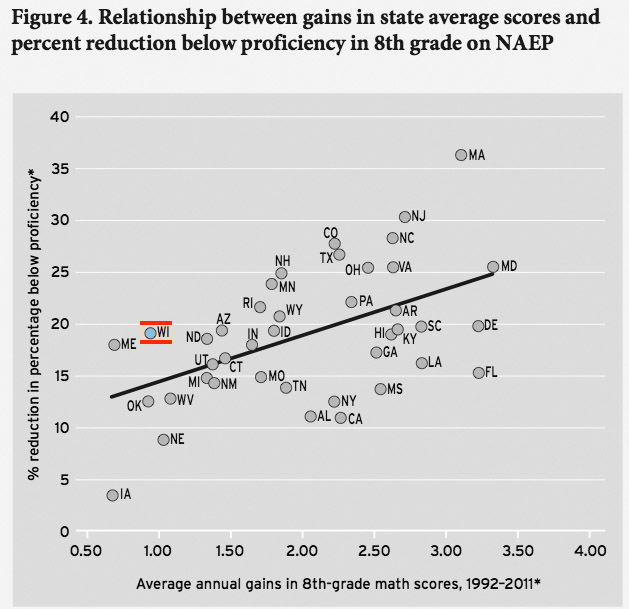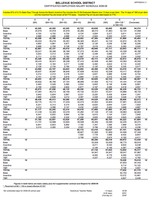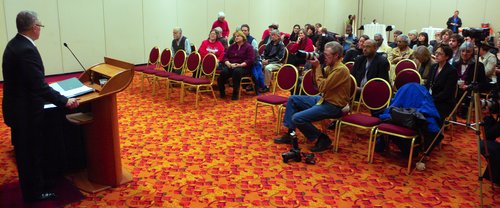Will Fitzhugh
The Concord Review
22 March 2010
In Outliers [2008], Malcolm Gladwell writes [p. 149-159] that: “…three things–autonomy, complexity and a connection between effort and reward–are, most people agree, the three qualities that work has to have if it is to be satisfying…Work that fulfills these three criteria is meaningful.” (emphasis in the original)
One of the perennial complaints of students in our schools is that they will never make use of what they are learning, and as for the work they are asked to do, they often say: “Why do we have to learn/do/put up with this?” In short, they often see the homework/schoolwork they are given to do as not very fulfilling or meaningful.
In this article I will argue that reading good history books and writing serious history research papers provide the sort of work which students do find meaningful, worth doing, and not as hard to imagine as having some future use.
In a June 3, 1990 column in The New York Times, Albert Shanker, President of the American Federation of Teachers, wrote:
“…It is also worth thinking about as we consider how to reform our education system. As we’ve known for a long time, factory workers who never saw the completed product and worked on only a small part of it soon became bored and demoralized, But when they were allowed to see the whole process–or better yet become involved in it–productivity and morale improved. Students are no different. When we chop up the work they do into little bits–history facts and vocabulary and grammar rules to be learned–it’s no wonder that they are bored and disengaged. The achievement of The Concord Review’s authors offers a different model of learning. Maybe it’s time for us to take it seriously.”
His point has value twenty years later. Even the current CCSSO National Standards recommend merely snippets of readings, called “informational texts,” and “literacy skills” for our students, which, if that is all they get, will likely bore them and disengage them for the reasons that Mr. Shanker pointed out.
Students who read “little bits” of history books have nothing like the engagement and interest that comes from reading the whole book, just as students who “find the main idea” and write little “personal essays,” or five-paragraph essays, or short “college” essays, will have nothing comparable to the satisfaction that comes from working on and completing a serious history research paper.
Barbara McClay, a homescholar from Tennessee, while she was in high school, wrote a paper on the “Winter War” between Finland and the Soviet Union. In an interview she was asked why she chose that topic:
“I’ve been interested in Finland for four years or so, and I had read a book (William Trotter’s A Frozen Hell) that interested me greatly on the Winter War; after reading the book, I often asked people if they had ever heard of the Winter War. To my surprise, not only had few of them heard about it, but their whole impression of Finnish-Soviet relations was almost completely different from the one I had received from the book. So there was a sense of indignation alongside my interest in Finland in general and the Winter War in particular: here was this truly magnificent story, and no one cared about it. Or knew about it, at least.
“And it is a magnificent story, whether anyone cares about it or not; it’s the stuff legends are made of, really, even down to the fact that Finland lost. And a sad one, too, both for Finland and for the Soviet soldiers destroyed by Soviet incompetence. And there’s so much my paper couldn’t even begin to go into; the whole political angle, for instance, which is very interesting, but not really what I wanted to write about. But the story as a whole, with all of its heroes and villains and absurdities–it’s amazing. Even if it were as famous as Thermopylae, and not as relatively obscure an event as it is, it would still be worth writing about.
“So what interested me, really, was the drama, the pathos, the heroism, all from this little ignored country in Northern Europe. What keeps a country fighting against an enemy it has no hope of defeating? What makes us instantly feel a connection with it?”
Perhaps this will give a feeling for the degree of engagement a young student can find in reading a good nonfiction history book and writing a serious [8,500-word, plus endnotes and bibliography] history research paper. [The Concord Review, 17/3 Spring 2007]
Now, before I get a lot of messages informing me that our American public high school students, even Seniors, are incapable of reading nonfiction books and writing 8,500 words on any topic, allow me to suggest that, if true, it may be because we need to put in place our “Page Per Year Plan,” which would give students practice, every year in school, in writing about something other than themselves. Thus, a first grader could assemble a one-page paper with one source, a fifth grader a five-page paper with five sources, a ninth grade student a nine-page with nine sources, and so on, and in that way, each and every Senior in our high schools could write a twelve-page paper [or better] with twelve sources [or better] about some historical topic.
By the time that Senior finished that paper, she/he would probably know more about that topic than anyone else in the building, and that would indeed be a source of engagement and satisfaction, in addition to providing great “readiness” for college and career writing tasks.
As one of our authors wrote:
…Yet of all my assignments in high school, none has been so academically and intellectually rewarding as my research papers for history. As young mathematicians and scientists, we cannot hope to comprehend any material that approaches the cutting edge. As young literary scholars, we know that our interpretations will almost never be original. But as young historians, we see a scope of inquiry so vast that somewhere, we must be able to find an idea all our own.
In writing this paper, I read almanacs until my head hurt. I read journal articles and books. I thought and debated and analyzed my notes. And finally, I had a synthesis that I could call my own. That experience–extracting a polished, original work from a heap of history–is one without which no student should leave high school.”
This paper [5,500 words with endnotes and bibliography; Daniel Winik, The Concord Review, 12/4 Summer 2002] seems to have allowed this student to take a break from the boredom and disengagement which comes to so many whose school work is broken up into little bits and pieces and “informational texts” rather than actual books and term papers.
If I were made the U.S. Reading and Writing Czar at the Department of Education, I would ask students to read one complete history book [i.e. “cover-to-cover” as it was called back in the day] each year, too. When Jay Mathews of The Washington Post recently called for nonfiction book ideas for high school students, I suggested David McCullough’s Mornings on Horseback, for Freshmen, David Hackett Fischer’s Washington’s Crossing for Sophomores, James McPherson’s Battle Cry of Freedom for Juniors, and David McCullough’s The Path Between the Seas for all Seniors. Naturally there could be big fights over titles even if we decided to have our high schools students read nonfiction books, but it would be tragic if the result was that they continue to read none of them. Remember the high school English teacher in New York state who insisted that her students read a nonfiction book chosen from the New York Times nonfiction bestseller list, and a big group of her female students chose The Autobiography of Paris Hilton…
When I was teaching United States History to Sophomores at the public high school in Concord, Massachusetts in the 1980s, I used to assign a 5-7-page paper (at the time I did not know what high schools students could actually accomplish, if they were allowed to work hard) on the Presidents. My reasoning was that every President has just about every problem of the day arrive on his desk, and a paper on a President would be a way of learning about the history of that day. Students drew names, and one boy was lucky enough to draw John F. Kennedy, a real coup. He was quite bright, so, on a whim, I gave him my copy of Arthur Schleshinger, Jr.’s A Thousand Days. He looked at it, and said, “I can’t read this.” But, he took it with him and wrote a very good paper and gave the book back to me. Several years later, when he was a Junior at Yale, he wrote to thank me. He said he was very glad I had made him read that first complete history book, because it helped his confidence, etc. Now, I didn’t make him read it, he made himself read it. I would never have known if he read it or not. I didn’t ask him.
But it made me think about the possibility of assigning complete history books to our high school students.
After I began The Concord Review in 1987, I had occasion to write an article now and then, for Education Week and others, in which I argued for the value of having high school students read complete nonfiction books and write real history research papers, both for the intrinsic value of such efforts and for their contribution to the student’s preparation for “college and career.”
Then, in 2004, The National Endowment for the Arts spent $300,000 on a survey of the reading of fiction by Americans, including young Americans. They concluded that it was declining, but it made me wonder if anyone would fund a much smaller study of the reading of nonfiction by students in our high schools, and I wrote a Commentary in Education Week [“Bibliophobia” October 4, 2006] asking about that.
No funding was forthcoming and still no one seems to know (or care much) whether our students typically leave with their high school diploma in hand but never having read a single complete history book. We don’t know how many of our students have never had the chance to make themselves read such a book, so that when they get to college they can be glad they had that preparation, like my old student.
As E.D. Hirsch and Daniel Willingham have pointed out so often, it takes knowledge to enrich understanding and the less knowledge a student has the more difficult it is for her/him to understand what she/he is reading in school. Complete history books are a great source of knowledge, of course, and they naturally provide more background to help our students understand more and more difficult reading material as they are asked to become “college and career ready.”
Reading a complete history book is a challenge for a student who has never read one before, just as writing a history research paper is a challenge to a student who has never been asked to do one, but we might consider why we put off such challenges until students find themselves (more than one million a year now, according to the Diploma to Nowhere report) pushed into remedial courses when they arrive at college.
It may be argued that not every student will respond to such an academic challenge, and of course no student will if never given the challenge, but I have found several thousand high school students, from 44 states and 36 other countries, who did:
“Before, I had never been much of a history student, and I did not have much more than a passing interest for the subject. However, as I began writing the paper, the myriad of facts, the entanglement of human relations, and the general excitement of the subject fired my imagination and my mind. Knowing that to submit to The Concord Review, I would have to work towards an extremely high standard, I tried to channel my newly found interest into the paper. I deliberately chose a more fiery, contentious, and generally more engaging style of writing than I was normally used to, so that my paper would better suit my thesis. The draft, however, lacked proper flow and consistency, and so when I wrote the final copy, I restructured the entire paper, reordering the points, writing an entirely new introduction, refining the conclusion, and doing more research to cover areas of the paper that seemed lacking. I replaced almost half of the content with new writing, and managed to focus the thesis into a more sustained, more forceful argument. You received that final result, which was far better than the draft had been.
In the end, working on that history paper, [“Political Machines,” Erich Suh, The Concord Review, 12/4, Summer 2002, 5,800 words] inspired by the high standard set by The Concord Review, reinvigorated my interest not only in history, but also in writing, reading and the rest of the humanities. I am now more confident in my writing ability, and I do not shy from difficult academic challenges. My academic and intellectual life was truly altered by my experience with that paper, and the Review played no small role! Without the Review, I would not have put so much work into the paper. I would not have had the heart to revise so thoroughly; instead I would have altered my paper only slightly, enough to make the final paper a low ‘A’, but nothing very great. Your Concord Review set forth a goal towards which I toiled, and it was a very fulfilling, life-changing experience.”
If this is such a great idea, and does so much good for students’ engagement and academic preparation, why don’t we do it? When I was teaching–again, back in the day 26 years ago–I noticed in one classroom a set of Profiles in Courage, and I asked my colleagues about them. They said they had bought the set and handed them out, but the students never read them, so they stopped handing them out.
This is a reminder of the death of the book report. If we do not require our students to read real books and write about them (with consequences for a failure to do so), they will not do that reading and writing, and, as a result, their learning will be diminished, their historical knowledge will be a topic for jokes, and they will not be able to write well enough either to handle college work or hold down a demanding new job.
As teachers and edupundits surrender on those requirements, students suffer. There is a saying outside the training facility for United States Marine Corps drill instructors, which says, in effect, “I will train my recruits with such diligence that if they are killed in combat, it will not be because I failed to prepare them.”
I do realize that college and good jobs are not combat (of course there are now many combat jobs too) but they do provide challenges for which too many of our high school graduates are clearly not ready.
Some teachers complain, with good reason, that they don’t have the time to monitor students as they read books, write book reports and work on serious history research papers, and that is why they can’t ask students to do those essential (and meaningful) tasks. Even after they realize that the great bulk of the time spent on complete nonfiction books and good long term papers is the student’s time, they still have a point about the demands on their time.
Many (with five classes) now do not have the time to guide such work and to assess it carefully for all their students, but I would ask them (and their administrators) to look at the time put aside each week at their high school for tackling and blocking practice in football or layup drills in basketball or for band rehearsal, etc., etc., and I suggest that perhaps reading books and writing serious term papers are worth some extra time as well, and that the administrators of the system, if they have an interest in the competence of our students in reading and writing, should consider making teacher time available during the school day, week, and year, for work on these tasks, which have to be almost as essential as blocking and tackling for our students’ futures.
=============
“Teach by Example”
Will Fitzhugh [founder]
Consortium for Varsity Academics® [2007]
The Concord Review [1987]
Ralph Waldo Emerson Prizes [1995]
National Writing Board [1998]
TCR Institute [2002]
730 Boston Post Road, Suite 24
Sudbury, Massachusetts 01776-3371 USA
978-443-0022; 800-331-5007
www.tcr.org; fitzhugh@tcr.org
Varsity Academics®
www.tcr.org/blog








